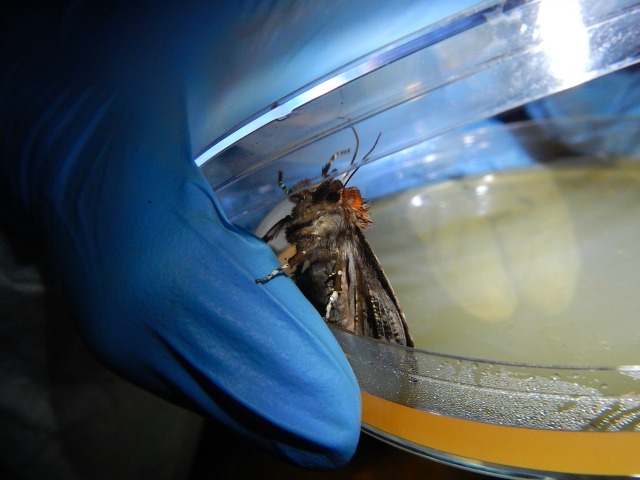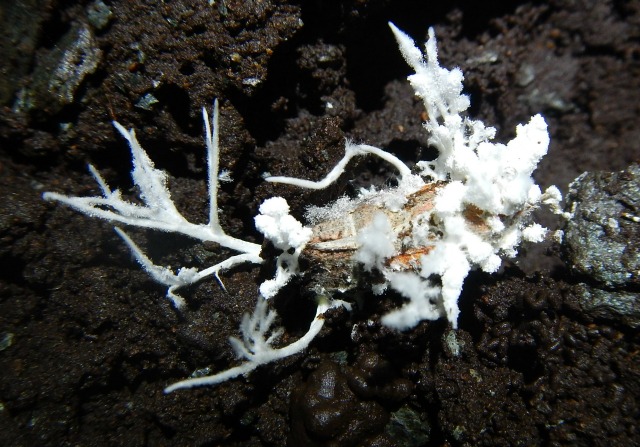A new brochure about white-nose syndrome has been produced. You can check it out here!
I recently did an interview with Global News about the discovery of a white-nose infected bat in Washington state. You can see the interview here!
One of my research projects was published in April in the journal ‘Insects’!
I sampled spiders, moths, harvestmen, and flies that overwinter in caves for fungi over three years. To sample them, I captured insects from the cave wall using a petri dish and then let the insect walk around on the agar surface before being released back into the cave. Fungi then grow on the agar while it is incubated at 7C in the laboratory. I found that spiders, harvestmen, and flies in caves carry viable spores of Pseudogymnoascus destructans, the fungus that causes white-nose syndrome in bats. These insects could potentially transport the fungus short distances. If the fungus can grow on the insects, then they would contribute to the environmental reservoir of the fungus in the absence of bats. Other researchers have already shown that the fungus can persist for years in cave sediments without bats. The fact that the fungus is also on insects in caves complicates decontamination efforts.
[Photo Credit: Karen Vanderwolf] A moth walking around on the agar surface in a petri dish
The insects also had a wide diversity of other fungal species on them (87 species!). Insects have fungal pathogens that infect them both in caves and in the surface environment. Below is a picture I took of a moth in a cave that has been colonized by the fungus Beauveria bassiana.
[Photo Credit: Karen Vanderwolf]
Although caves might seem like simple ecosystems when compared to surface environments, there is a lot going on!





2 comments
“Below is a picture I took of a moth in a cave that has been colonized by the fungus Beauveria bassiana.”
This does not look like the mycelium of Beauveria bassiana. Was this identification made based on size and shape of conidia, on appearance of hyphae, or what? This form looks more like the ascomycete Cordyceps.
It was based on the size and shape of conidia, but no sequencing was done.